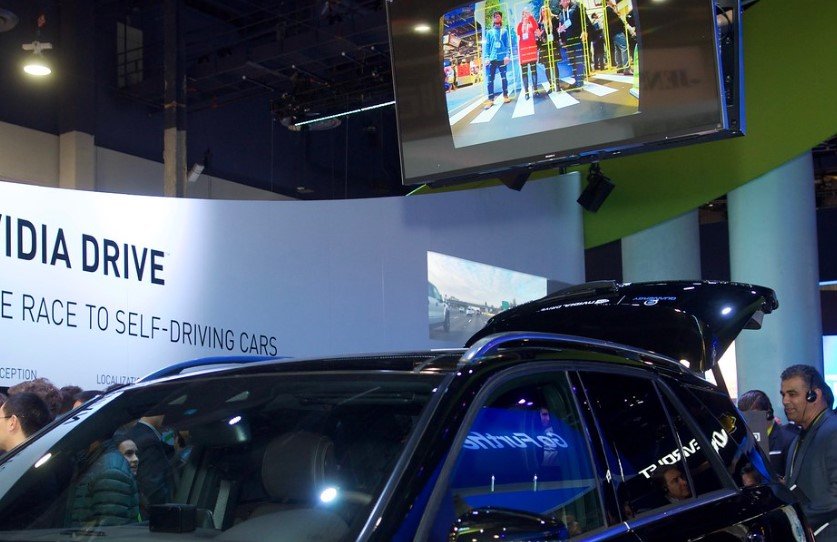Nvidia reported a massive 69% jump in its automotive revenue for the second quarter of 2025, reaching $586 million. This growth comes from strong demand for self-driving technology, including the DRIVE platform and Thor chip, as partnerships with companies like Toyota and Uber boost its role in AI-powered vehicles.
Breaking Down the Revenue Jump
Nvidia’s latest earnings show the automotive segment hitting new highs. The company shared these figures in its fiscal second quarter report, ending July 2025. Experts say this surge reflects a shift toward smarter cars that use AI for navigation and safety.
This performance stands out against Nvidia’s overall revenue of $46.7 billion for the quarter, up 56% from last year. The auto unit’s growth rate outpaced many expectations, driven by sales of chips and software for autonomous driving. Investors watched closely, as this diversifies Nvidia from its main data center business.
Analysts point to rising global interest in electric and self-driving vehicles as a key factor. With carmakers facing pressure to innovate, Nvidia’s tools help them build reliable systems faster.
Key Technologies Fueling the Growth
At the heart of this success is the DRIVE platform, which handles real-time AI processing in vehicles. This system integrates sensors, cameras, and computing power to make split-second decisions on the road.

The new Thor chip takes it further, offering over 2,000 trillion operations per second. It builds on earlier models like Orin, providing more power for complex tasks in self-driving cars. Companies use it for everything from city taxis to delivery trucks.
Nvidia also ties in its Omniverse ecosystem, a virtual world for testing vehicle designs. This cuts costs and speeds up development, making it easier for partners to roll out safe autonomous features.
- DRIVE platform: Focuses on safe, real-time driving decisions.
- Thor chip: Delivers high-speed AI for advanced autonomy.
- Omniverse: Enables virtual simulations to refine vehicle tech.
Major Partnerships Driving Adoption
Nvidia has teamed up with big names to expand its reach. Toyota is adopting the DRIVE system for next-generation cars, aiming for better driver assistance and full self-driving capabilities.
Uber uses Nvidia tech in its robotaxi plans, partnering with firms like Lucid Motors for Level 4 autonomy. These deals show how ride-sharing services are betting on AI to transform transportation.
Other partners include Volvo, Mercedes-Benz, and Chinese EV makers like BYD and Li Auto. These collaborations cover cars, trucks, and even delivery robots, creating a broad ecosystem.
| Partner | Technology Adopted | Focus Area |
|---|---|---|
| Toyota | DRIVE AGX Orin | Autonomous vehicles |
| Uber | DRIVE AGX Thor | Robotaxi programs |
| Volvo | Thor chip | Self-driving trucks |
| BYD | DRIVE platform | Electric vehicle AI |
This table highlights how Nvidia’s tech fits into different mobility projects.
Challenges and Market Outlook
While the growth is impressive, Nvidia faces hurdles. Rivals like Intel and Qualcomm compete in the auto chip space, pushing for similar innovations. Regulations on self-driving cars vary by country, which could slow widespread use.
Demand for AI in mobility keeps rising, with experts forecasting the autonomous vehicle market to hit trillions in value soon. Nvidia’s CEO has called it a huge opportunity, especially as cities look for efficient transport solutions.
Recent events, like CES showcases in early 2025, highlighted Nvidia’s demos of robotic cars. These build excitement and attract more investments.
What This Means for the Future
Looking ahead, Nvidia plans to ramp up production of Blackwell-based systems, including Thor, for broader adoption. This could lead to more affordable self-driving options in everyday cars.
The company’s push into AI mobility aligns with global trends like sustainable transport and smart cities. As more data from real-world tests comes in, expect faster improvements in safety and efficiency.
Share your thoughts on Nvidia’s auto tech growth in the comments below, and pass this article along to fellow tech enthusiasts.








